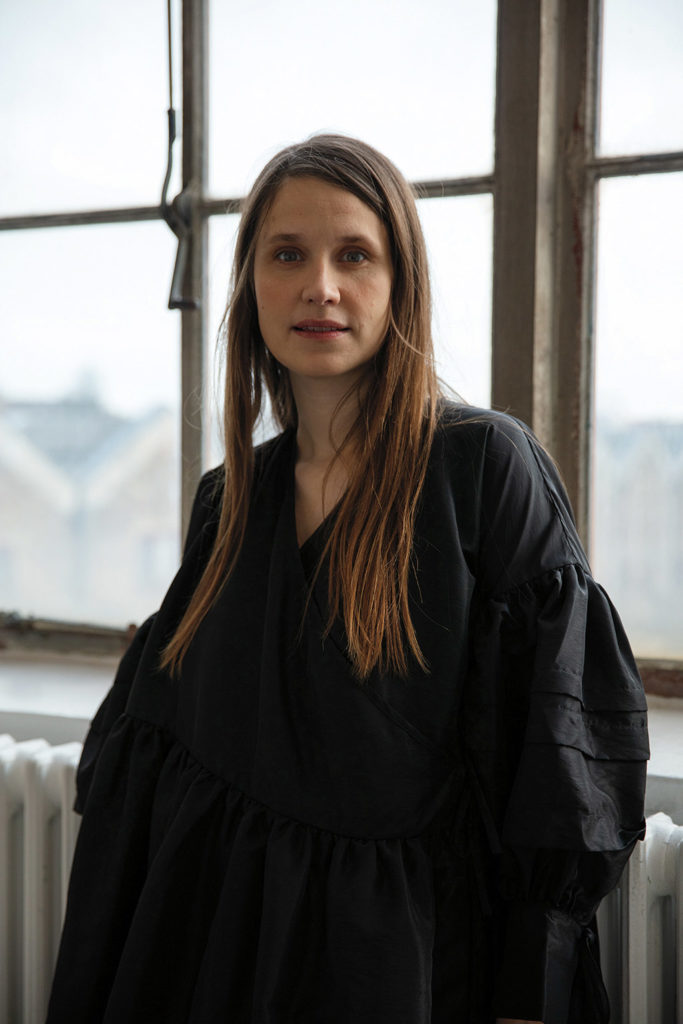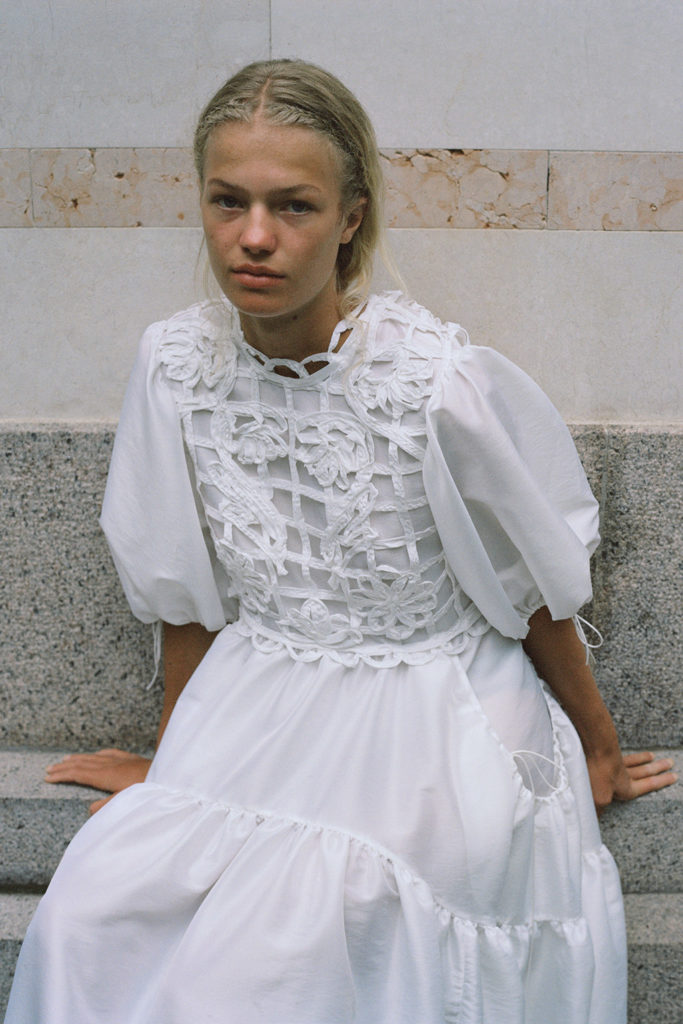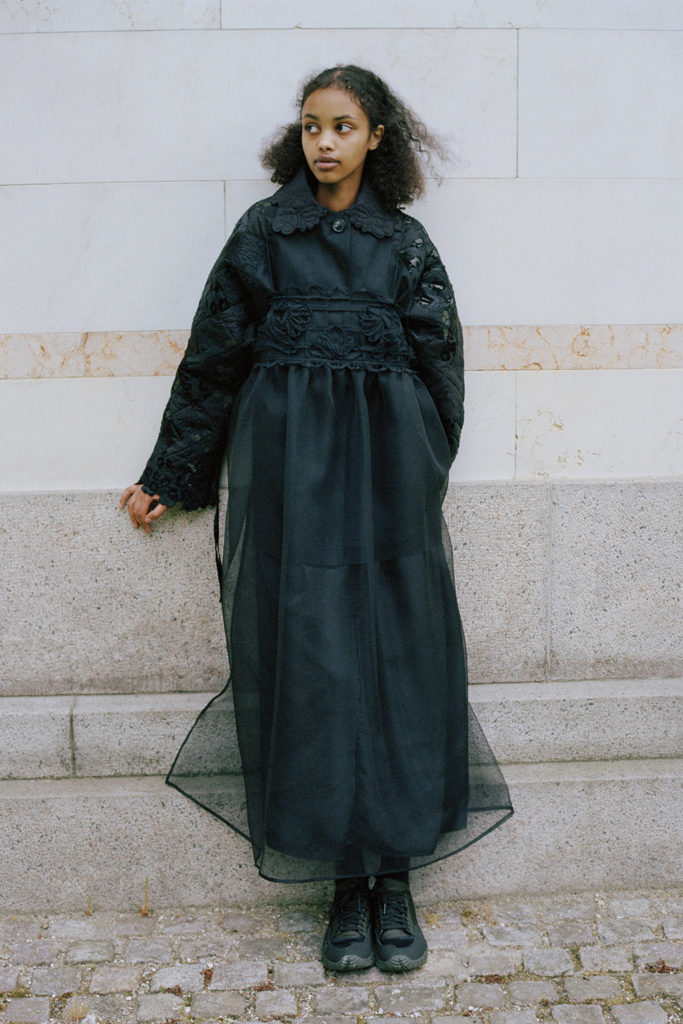In the look book for Cecilie Bahnsen’s Spring collection, models roam through a moody coastal landscape wearing the designer’s frothy, fanciful wares. Photographed on an island outside the designer’s native Copenhagen, the images are illusory testaments to where we have been these past few months: heads in the clouds, bodies in limbo.

Cecilie Bahnsen photographed by Josephine Seifert.
For her part, the Danish designer has had quite the year. She gave birth to a baby boy, all while establishing herself as a thought leader in lockdown innovations. “Even before the pandemic, as a brand, we have always been conscious of the problems of overproduction,” she says. While in lockdown, Bahnsen created a collection using only materials from previous seasons. Too precious to waste, the materials had all been handmade in skilled mills across Europe in recent years. The collection, dubbed “Studio” rather than “Resort” to reflect a more timeless quality (and one less pegged to the vacations we’re not taking), features patchworked organza baby-doll dresses alongside others that cleverly blend knits with layers of lace. “It sounds so easy, using the leftovers, but the pattern cutting we had to do in order to patchwork pieces together was incredibly painstaking,” says the designer. Like quilts that are made by many hands and enjoyed by generations, “the clothes feel even more special because they are so rare.” A butter-yellow cable-knit sweater that transforms into a caged lace overlay dress feels similarly one-of-a-kind.

Meticulous, couture-like craftsmanship is something Bahnsen has become known for since founding her namesake brand in 2015 (in 2017, she landed a spot in the prestigious LVMH Prize competition). Through the pandemic, though, Bahnsen says she’s found a new sense of freedom, allowing herself to experiment in ways she has scarcely done since her days at the Royal College of Art in London—whether through mixing and matching unexpected fabrics or by adding quirky new separates to the lineup. “I was thinking a lot about the women who shop our clothes and wear collection pieces in an everyday way,” she says. “They might put on one of our dresses on a Monday morning because they feel like it. They create their own style and personality by mixing the pieces into their wardrobe.” Bahnsen’s pieces fit squarely within the rebellion of bold, fantastical femininity that has risen since the start of the pandemic. “Puffy dresses and beautiful fabrics can offer a much-needed escape from what surrounds us in the real world,” she says.

The Studio collection was just the first step of Bahnsen’s commitment to a future of less-is-more. This summer, she introduced her “Encore” collection, which further utilized upcycled materials in monthly drops. Her signature styles are visible in each piece, from a linen floral fil coupé dress to a pillow made from hand-quilted silk.
“I am always excited to see my designs on any woman and see her wearing the collection her way,” says the designer, who, before launching her own line, was a print designer for John Galliano. Looking toward to what some people might perceive as an uncertain future for fashion, Bahnsen doesn’t seem fazed. “Clothes are to be treasured, but above all, clothes are to be worn, for celebrations, holidays, and everyday life,” she says. “Nothing saved for a best or special occasion.”

